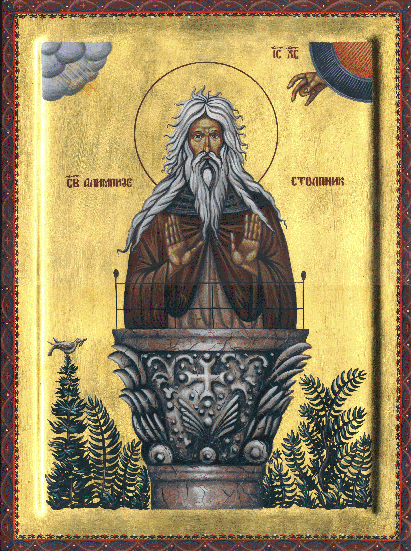Live Lone and Prosper
On the expectations of life of hermits and saints in the age of disease.
What was the life expectancy of wealthy people in the past? What was the life expectancy of regular people in the past? we shall ask both questions at once because they have the same answer.
Rich age-of-death data exists in the form of thousands of Inquisitions Post-Mortem, these are “Post-Mortem” property examinations of very wealthy “Royal tenants”, genealogies of English peers, and parish data1.
The data displays a unique case of pre-modern equality lost to the modern world, the wealthy do not do much better than the poor, the results of an age in which the burden of mortality is determined mostly by diseases that spare neither commoners nor kings2. But there is one group that seems to buck the trend and it all thanks to the worship of god, kind of, here is demographer Josiah Cox Russell explaining who and why:
“An interesting group, the pillar saints, seems to offer a chance to study the possibilities of the span of life then. Few of them died younger than seventy and many lived far beyond the "three score and ten." While a few of them began their pillar careers early in life, most of them 35 seem to have started between the ages of twenty and forty- five. Instead of living to between fifty and sixty-one, their normal expectation, most of them survived far beyond these ages….One important physical factor was the isolation of these saints from those ordinary human contacts which expose people to contagion. While they did occasionally permit persons to come up the ladder to the very top, this permission was seldom given. Most visitors apparently ascended no higher than the top rung of the ladder: many indeed did not have the courage to climb that high even with the encouragements of a saint at the top. The ladder did not rest against the pillar except when in use. This should probably have prevented rats from climbing the pillars, bringing the bubonic plague with them…Since contagious disease was probably the greatest factor in mortality then, its absence permitted the saint to live much longer than the average citizen of those centuries.”3
Russell presented this idea in his 1958 book "Late Ancient and Medieval Population" and it would be interesting to try and test it.
From the small sample of pillar saints4 (AkA Stylite) that had historical mentions of their age of death a remarkable longevity is apparent with an average age of death of 83.1.
Several problems exist here, one is exaggeration about the age of death of saints, second is that people who haven’t died early are more likely to become notable to historians, and a third is small sample size.
To correct for these we will extend the age dataset to medieval hermits given the same logic on the effects of social distancing on longevity is also applicable here, and we will compare the age of death to equivalent groups of notable persons who will also face biases in the same direction concerning exaggeration of their age of death.
Adding 16 medieval hermits5 to the data the average age of death of 24 pillar saints and hermits is around 77, still remarkably long.
Who shall we compare them to? In a dataset of 300,000 famous people born between the 24th century BCE and 1879, the mean age of death has been around 60 since time memorial6.
A study by Robert Kastenbaum7 showed that non-martyred saints are longer lived, in a sample of several hundred saints, the mean age of non-martyred saints was 66.8 and 69.9 in non-martyred male saints. Based on the previous lifespans mentioned we will compare the sample of saintly isolates to ages 60, 67, and 70 for the males in the sample.
Doing that we see that they indeed have a statistically longer lifespan
Although the sample size here is still rather small, the tests lends support to Russell’s hypothesis that those who eschew the material world stay in it the longest.
Graph is from “Re-assessing Josiah Russell’s measurements of late medieval mortality using the inquisitions Post Mortem” - J. Oeppen, L. R. Poos and R. M. Smith
As a matter of fact, the British royal family used to have lower life expectancy at birth than commoners.
From Russell’s "Late Ancient and Medieval Population", p.33.
https://en.wikipedia.org/wiki/Category:Stylites
“The longevity of famous people from Hammurabi to Einstein” - David de la Croix & Omar Licandro
“The age of saints and the saintliness of age” - Robert Kastenbaum










Hi, I landed on your twitter page mentioning the database of cuneiform inscriptions and clicked through to your main page which I've been scanning.
I see now that you have a lot of information on Jews in Ptolemaic Egypt and being as I am currently in Egypt (hell, I'm the de facto chief rabbi) I'd love to talk to you.
My contact info is here: https://ydydy.substack.com/about
Thanks,
Yadidya